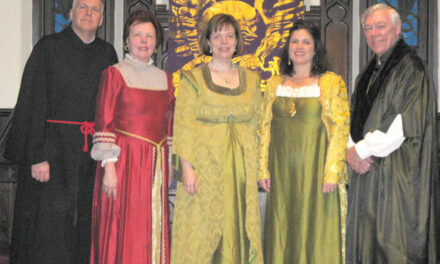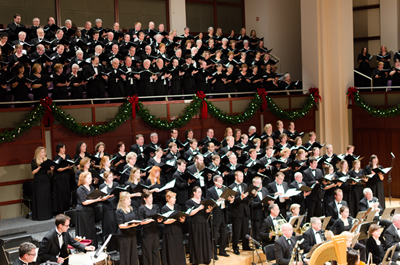For a couple of hours, music lovers completely forgot about hoop dreams as the Duke New Music Ensemble [dnme], directed by composer Vladimir Smirnov, performed three new pieces by graduate students in composition and excerpts from Cornelius Cardew‘s 1967 Treatise. The program took place in Baldwin Auditorium on the campus of Duke University.
Smirnov explained that the concert program was not designed with a theme in mind but was rather stitched together with [dmne]’s interpretation of short excerpts from Cardew’s seminal work. According to musicologists Schwartz and Godfrey, writing in Music Since 1945, Cardew’s graphic notations were deliberately ambiguous, allowing the performers artistic freedom. And influenced by John Cage and David Tudor, Cardew walked the thin line between improvisation and prepared performance. [dnme] took the directive seriously. The ensemble created interludes by stringing together musical ideas, gestures, and motifs into fluid narratives without the structure of tonal organization.
[dnme] opened the program with D. Edward Davis‘ 2015 space that hears, for piano and electronics. Sharing the piano bench, two performers (Scott Lee and Smirnov) seduced this listener into a trance as the piece slowly unfolded, thus suspending the perception of time. Like the background noise emanating from fluorescent lights and centralized heat, the electronic component provided ambient, understated sound. Smirnov aptly described the composition as “Feldman-esque.” [dnme]’s convincing performance was beautiful; in my opinion, the work is more than worthy of future performances.
Benjamin Daniel‘s “McGyverism,” for cello and live electronics, is a study of technology in partnership with human performance. Kenneth Stewart and his alter-ego, Daniels (the live electronics) played out that study on stage and in real time (as opposed to a human performer playing with recorded media). Like any improvisation, the musical trajectory was worked out ahead of time, but there was room for personal choice, and, with that, the possibility of disaster. In this case, the piece proceeded without a hitch. I found myself completely “in the moment” while busy listening. It was a splendid performance.
The final piece, “Mandala,” by Smirnov, “…explores thick and bass-heavy textures.” The melodic material played by cellist Stewart captured my attention, a reminder that we seem to be wired to make sense of the sounds we hear. Perhaps this is why the piece reminded me of some of the improvisations played by Yo-Yo Ma’s Silk Road performers. Aside from the erhu (a Chinese folk instrument) bow Smirnov used to play his bass guitar, [dnme] players performed on modern instruments. *Ghost-like figures on changing colored backgrounds appeared on the curtain behind the performers, making an effective backdrop. The sum total was an exceptionally well constructed, and aesthetically pleasing work of art.
As always, the graduate students produced and showcased high-level compositions – works that point to artists with great potential. [dnme] players performed them with equal commitment. The performers on this concert were, variously, Imani Mosley, bassoon, Kenneth Stewart, cello, Sid Richardson, bass, Vladimir Smirnov, bass and piano, Scott Lee, piano, and D. Edward Davis, percussion. Congratulations to all!
*Lighting design and sound were produced by Rick Nelson from the Music Department.
The Duke New Music Ensemble’s 2014-15 season is made possible in part by the McClatchey Music Endowment in the Department of Music.












